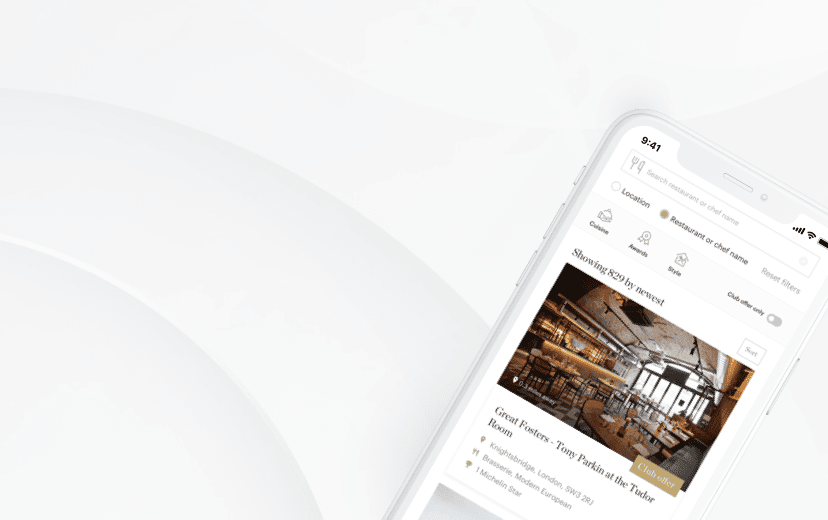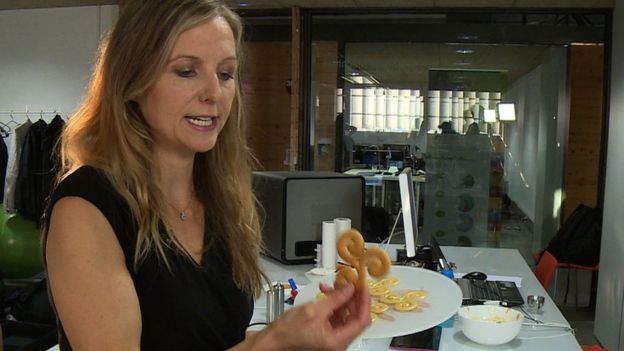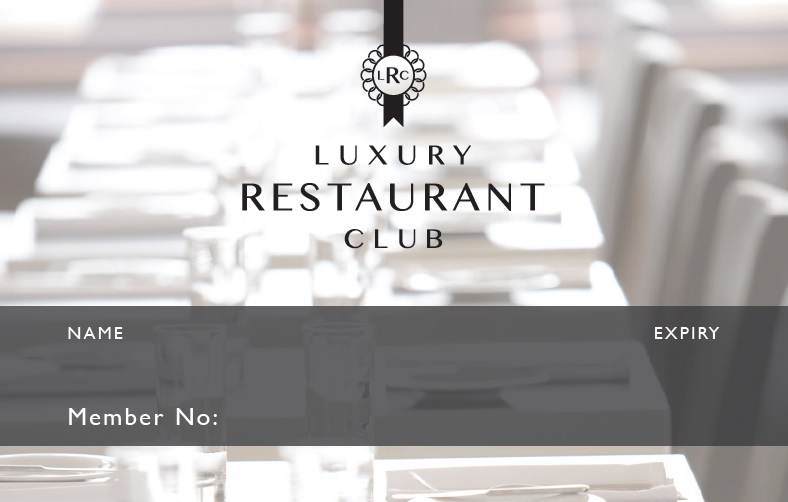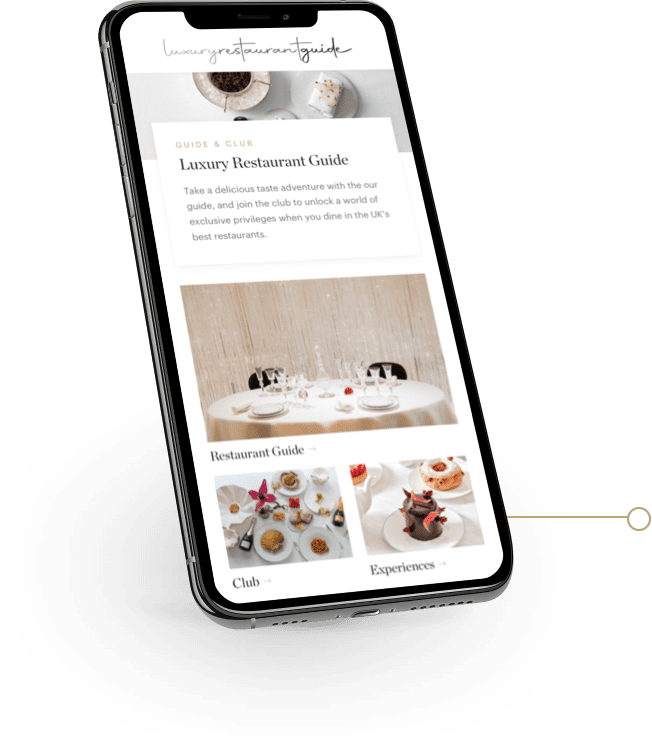Chef News, Recipes, Recommendations
Chefs Recipe - Caramel Poached Pears with Cider and Mascarpone Cream by Shay Cooper, The Goring Hotel
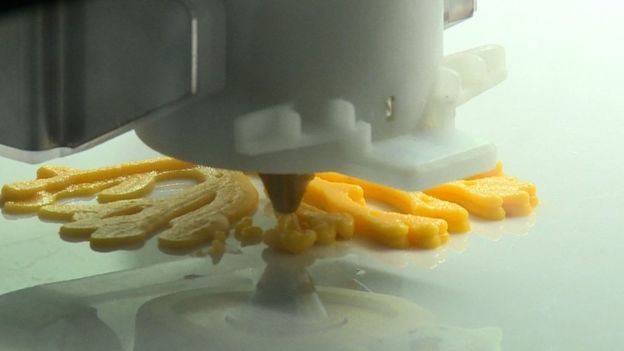
Member offers, Miscellaneous, News, Recommendations, Restaurant news, Review
New Charcuterie 'Best of British' Dining Concept Launched at Great Fosters, Egham
The Future of Food? How 3D Printing Is Shaking Up Luxury Dining
We were fascinated by this article by the BBC this week and it started much debate in the office. While 3D printing has been around for few years now its use in the culinary field is just getting started.
Although some reactions were very negative it brought up an interesting point about the nature of Michelin level food. The highest award-winning restaurants can have around 20 chefs all adding to your one dish – do you really want the food you eat to have been picked over by such a huge team? There is a rumor that one leading Knightsbridge restaurant employs a chef simply to smooth out all of the leaves and flowers used on each plate before it is send out.
Would it not be better that the ‘creative’ element of the dish be performed by a machine instead?
Here is the article – we’d love to know your views!
Paco Perez is experimenting. The chef has won several Michelin stars for his restaurants. At one of them, La Enoteca at the Hotel Arts in Barcelona, he is busy creating a new dish.
He places a plate inside a strange-looking machine that looks a bit like a large microwave oven. He touches the controls, and a few minutes later, removes the plate, which is now decorated with a delicate, flower-like design.
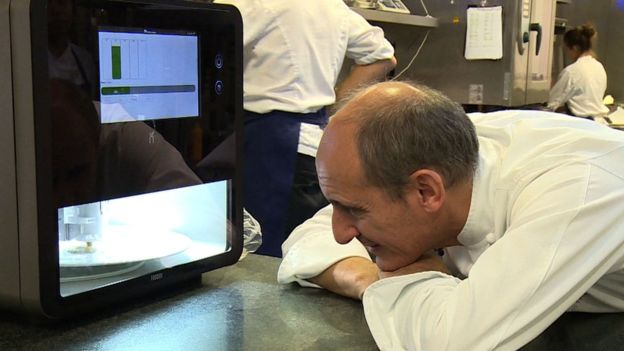
Next he adds more ingredients: caviar, sea-urchins, hollandaise sauce, egg, and a “foam” of carrot. He calls his creation “Sea Coral”. “It’s as if we were on the sea floor,” he explains. “We see a coral with sea urchins on it – then when we eat, we discover all the profundity of the sea and its iodine flavours”.
The centrepiece of the dish, the “coral,” is made of a seafood puree in an intricate design that would have been extremely difficult to produce by hand. But it has been piped on to the plate by a new kind of 3D printer. Click here to learn more about it in detail.
Mr Perez is delighted with the results and the capabilities of the machine.
“It’s very interesting what today’s technology is contributing to gastronomy” he says. “Creativity is shaped by what technology can do”.
The machine he is using is called Foodini, and is made by Natural Machines, a new company based only a few miles away from La Enoteca.
Barcelona is certainly a fitting place for a business trying to bring fine dining and technology together. It’s located in Catalonia, a part of Spain renowned for culinary excellence. Celebrated chefs from the region, such as Ferran Adria (who Paco Perez trained and worked with), are famous for pushing the boundaries of gastronomy ever further.
Elaborate designs
Unlike some other food-capable 3D printers, the Foodini device has been designed from the start to be a specialised food-printing machine. It can print with a very wide range of foods, from mashed potato to chocolate. Ingredients are placed in stainless steel capsules, which are reusable.
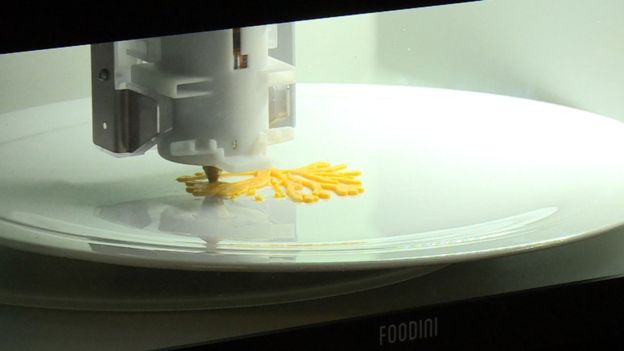
With suitable ingredients the machine is capable of printing structures several centimetres high, making possible some quite elaborate 3D designs. It is also a so-called “internet of things” appliance – which means that it can be connected to the internet, and recipes and designs can be uploaded from anywhere.
Natural Machines co-founder Lynette Kucsma says they have had a lot of interest from top chefs for two main reasons. One is customisation, enabling the creation of dishes that are just not possible to make by hand.
“The other reason is automation”, she says. “Imagine you need to print breadsticks in the shape of tree branches for a hundred people sitting that evening. Rather than food piping it or doing that by hand, you can automate it with a 3D food printer”.
Growing market
Other chefs apart from Mr Perez are experimenting with this new technique. Mateo Blanch from La Boscana in Lleida in Spain has been working with a 3D printer made by a Dutch firm, By Flow. He told the International Business Times last year that “it has changed the way I work with food…. I am capable of a level of precision that would never have been possible before”.
And in the USA, 3D printer maker 3D Systems has been collaborating with the Culinary Institute of America on some ambitious projects. Suppliers of 3D food printers are optimistic that the devices will soon become common in top professional kitchens.
But for Ms Kucsma the world of haute cuisine is only the start.
She foresees a growing consumer market for 3D printers: “as people see it coming into restaurants and … start becoming familiar with eating 3D printed food and knowing that it’s made with fresh, real ingredients, that’s when the mind change starts to happen” she says. However Ms Kucsma says that there’s an additional feature that could transform the appeal of these products: the ability to cook.
She says that the existing Foodini machine “can heat the individual food capsules to do things like keeping chocolate at a good melting point” – but for future models they are working to add the capacity to cook. Market research suggests that this could really help the products to become mainstream.
Stifling creativity?
Ms Kucsma says the professional market is likely to be less interested in printers that can cook as well as print food, since they have many other means of cooking at their disposal. The main appeal of the machines will be their ability to customise and create dishes never before possible.
But despite all the creative possibilities that makers of these devices say they have to offer, isn’t there a danger that they will instead stifle creativity? If a machine combined with computer software is doing all the work, where is there room for the magic, human touch of the gifted chef?
Mr Perez dismisses such concerns: “In its day, traditional food was the avant garde. The people who cooked it would use a blender, or a microwave, an oven, a heat lamp…You see, tradition is innovation – and always has been. In moving forwards, technology will always be present.”
Original article appeared on BBC News Business by Neil Koenig -link here
Have your say – would you eat food that had been designed and cooked by a 3D printer? Comment below.
The Luxury Restaurant Club – Rewarding Fine Dining
Not a member? Why not treat yourself or a loved one to a year of dining in luxury for just £95.00 – click here to find out more.
